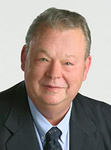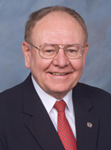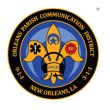Triumph rises from tragedy
Triumph rises from tragedy
The Turning Point
By virtually any measure, the terrorist attacks of Sept. 11, 2001, were horrific tragedies. Thousands of lives were lost; iconic buildings such as the Twin Towers and the Pentagon were demolished and damaged, respectively; and the U.S. economy immediately headed into a downward spiral.
As the 10th anniversary of the 9/11 attacks approaches, there is little doubt that the collective event has become a key moment in the history of public-safety communications, as well. In the aftermath of 9/11, most attention was focused on the deaths of firefighters who remained in the Twin Towers after police officers had been ordered to evacuate the buildings prior to their collapses.
“Interoperability” was not a new word in public-safety communications at the time — efforts to improve communication between disparate agencies responding to large-scale incidents had been a focal point in the sector after events such as the 1982 Air Florida crash, the 1992 World Trade Center bombing and the 1995 Oklahoma City bombing. After 9/11, however, the importance of interoperable communications to public-safety response began to resonate among federal officials, as well.
 “Unfortunately, sometimes it takes something like 9/11 or [Hurricane] Katrina to get people talking,” mobile wireless consultant Andrew Seybold said. “It took tragedies like the Oklahoma City bombing, 9/11 and Katrina to get the public focused on an issue they didn’t know existed or understood. It took all of those things to get public safety to start working together, instead of in their own little worlds.”
“Unfortunately, sometimes it takes something like 9/11 or [Hurricane] Katrina to get people talking,” mobile wireless consultant Andrew Seybold said. “It took tragedies like the Oklahoma City bombing, 9/11 and Katrina to get the public focused on an issue they didn’t know existed or understood. It took all of those things to get public safety to start working together, instead of in their own little worlds.”
Indeed, political, regulatory and funding initiatives have played large roles in transforming public-safety communications from a sector dependent on proprietary LMR technologies that could not work together to one that utilizes interoperable gateways and standards — P25 in the LMR arena and LTE as a broadband wireless technology — in an effort to improve interoperability and enhance first responders’ toolkit to accomplish their missions.
“We’re not where we need to be, but we’re a lot better off than we were 10 years ago,” Seybold said. “If it hadn’t been for 9/11 and Katrina, would we be as far along as we are? No. Would we have ever conceived the idea of a nationwide, broadband, fully interoperable network? Probably not, because the politics would have been insurmountable.”
Charles Dowd, a deputy chief in the New York Police Department, echoed this sentiment, citing the fact that interoperability within and near New York City is being executed at unprecedented levels, but an officer traveling just 25 miles away faces many of the same challenges encountered before 9/11.
“We’re clearly better off than we were, but we’re still far away from where we want to be,” he said.
Perhaps the most obvious immediate impact of the 9/11 attacks was the creation of the U.S. Department of Homeland Security (DHS), which was charged with taking actions designed to combat attacks of a nature few had contemplated before Sept. 11, 2001 — attacks perpetrated on the soil of the continental United States.
For the general public, the most noticeable DHS action was establishment of the Transportation Security Administration (TSA), which revolutionized the pre-boarding routines of airplane passengers throughout the nation. In the public-safety communications arena, the department’s key actions included the creation of an interoperability continuum, the encouragement of fusion centers designed to serve as key points of information-sharing and the establishment of DHS grants that provided incentives to government entities to work in regional or statewide groups, instead of individually.
Related story: TSA administrator details information-sharing initiative
“If the 700 MHz narrowband spectrum had been made available sooner, we would have been further along with this, but what we’ve seen is more work being done on regional, statewide and aggregated systems for interoperability,” Seybold said. “Mainly, what’s happened is that people have started thinking in a broader scope. They’re not thinking about just this city or county.”
Ken Rehbehm, a principal analyst with the Yankee Group and former volunteer firefighter, agreed, noting the importance of increased federal funding for public-safety communications during the past decade.
“I think it’s highly unlikely that the changes would have occurred at the pace that they have,” he said. “It’s required substantial investments and, prior to 9/11, the funding for public-safety communications was largely a local affair — it was very conservative, very slow changing. There was no strong impetus to replace radio systems that were, in fact, working.”
Of course, spectral-efficiency initiatives such as narrowbanding below 512 MHz and rebanding 800 MHz systems also played a key role in helping public safety secure the funding needed to upgrade aging LMR networks, but Rehbehm said he believe the backdrop of events like 9/11 and Hurricane Katrina helped these efforts become higher priorities.
 Harlin McEwen, chairman of the Public Safety Spectrum Trust, disagrees, stating his belief that FCC initiatives such as narrowbanding, rebanding and the proliferation of regional system would have happened, regardless of 9/11 occurring.
Harlin McEwen, chairman of the Public Safety Spectrum Trust, disagrees, stating his belief that FCC initiatives such as narrowbanding, rebanding and the proliferation of regional system would have happened, regardless of 9/11 occurring.
With the exception of $1 billion in interoperability grants funded by the proceeds from the 700 MHz commercial auction, McEwen said he does not recall a large influx of new federal money for public-safety communications in the aftermath of 9/11. In the case of funding for the 911 emergency communications system, $1.25 billion was authorized, but almost no money was appropriated; in many other cases, new federal grants were funded primarily by taking money from other public-safety programs.
Podcast: PSST Chairman Harlin McEwen on 700 MHz network
McEwen also said a recent report to Congress claiming that public-safety agencies have wasted $13 billion in interoperability funding since 9/11 was inaccurate.
“Recently, there were comments made about how we had wasted billions of dollars over the last 10 years. That’s just not true,” he said. “There may have been some dollars wasted — I don’t have a good accounting of every dollar that was spent — but I can tell you that most of the money has been wisely spent, and the requirements to improve interoperability have been followed and improvements of significant proportion have been made. The problem is that nobody has a good scorecard.”
However, McEwen said he believes creation of the FCC’s public safety and homeland security bureau can be attributed to events like 9/11.
“Probably there wouldn’t be a public safety and homeland security bureau, if it hadn’t been for 9/11,” McEwen said.
Regardless of the reason for its genesis, the fact that the FCC has a separate bureau for first-responder communications — previously, public-safety issues typically were handled by the FCC’s wireless bureau, which was perceived as being more focused on the burgeoning commercial wireless industry — is a step in the right direction, Dowd said.
“I think the creation of the public-safety bureau was a very smart move on the part of the FCC,” Dowd said. “I think it shows that they acknowledge and recognize that public safety clearly is a separate discipline from the rest of the FCC’s business. We’ve had a our disagreements with them from time to time … but one of the things that has been a huge advantage (since the bureau was established) is that at least we had somebody that we could go to who understood — and who was responsible to listen to — public safety’s needs.”
Of course, the current hot topic for public safety is wireless broadband communications — something public-safety officials believe is needed to leverage newfound information-sharing capabilities most efficiently in the field. Having chosen LTE as its technology — with the FCC’s blessing — public-safety officials have spent the last 18 months trying to persuade Congress to approve the reallocation of the 700 MHz D Block spectrum to public safety and provide at least $10 billion to fund the network buildout.
Most political observers initially gave public safety little chance of success in this pursuit, noting many federal lawmakers’ desire to auction the D Block to commercial operators. However, public safety has received strong support in the Senate and from the White House on the issue, while there is still considerable resistance in the House as of press time.
Neither Seybold nor Rehbehm offered to predict the final outcome of D Block legislation, but both expressed doubt that lawmakers would even consider D Block legislation seriously had events like 9/11 and Hurricane Katrina not happened. In fact, Seybold said the 24 MHz of 700 MHz spectrum already allocated to public “could have very easily been” jeopardized without the stark reminders that such high-profile situations provide.
Indeed, with the 10th anniversary of 9/11 approaching, many Beltway sources believed public safety’s best opportunity to get legislation passed would be before Sept. 11, because lawmakers would like to avoid having to answer questions from the media seeking an explanation for the lack of nationwide plan 10 years after 9/11.
“Typically, when public safety and the needs of public safety get attention is after a disaster like 9/11 or Katrina,” Dowd said. “It would have been more of a struggle without those — and it’s still a struggle with them. The focus of what we’re saying to them is, ‘Have a sense of urgency, as if those happened yesterday. Let’s get going on this thing, because it’s that important to the country’s security.'”
 And Dowd’s vision for such a solution is to leverage the innovation and economies of scale associated with broadband technology to get the vast majority of public-safety communications — voice and data — onto 700 MHz LTE networks, so interoperability can occur within the same band and use the same technology, instead of depending on a series of network gateways to link disparate systems operating on different bands.
And Dowd’s vision for such a solution is to leverage the innovation and economies of scale associated with broadband technology to get the vast majority of public-safety communications — voice and data — onto 700 MHz LTE networks, so interoperability can occur within the same band and use the same technology, instead of depending on a series of network gateways to link disparate systems operating on different bands.
If this can be achieved, Dowd is hopeful that first-responder agencies will have the communications tools necessary to prevent a repeat of one of the worst memories of his career.
Related story: A Big Voice in the Big Apple — NYPD communications chief Charles Dowd
“In my 30 years in the police department, one of the most helpless feelings you could have had was watching the attack on the World Trade Center and realizing, ‘You know what, [the terrorists] got us.'” Dowd said. “They got us, and there wasn’t a whole lot we were going to be able to do about it, at least not at that moment. It was a very frustrating feeling to have to sit there and admit to yourself, ‘These terrorists got us.’
“The goal is to do everything we possibly can to ensure that they don’t get us again. The only obvious solution, from a communications perspective, is a broadband network that we know we can rely on and trust that’s controlled and operated by public safety that will get the job done at the instant we need it to get it done. … This information capability tied into this broadband capability is the solution to that.”
— Donny Jackson












